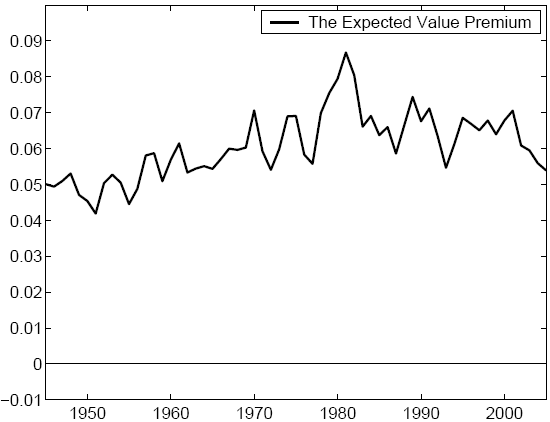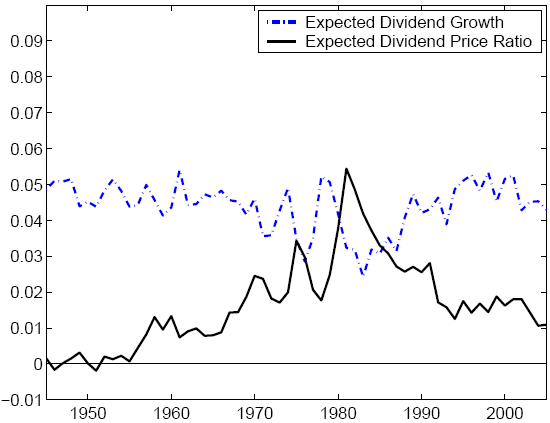How much of a long-term total return advantage do investors perceive for high book-to-market (value) stocks over low book-to-market (growth) stocks? Is this perceived premium stable over time? In their April 2007 paper entitled “The Expected Value Premium”, Long Chen, Ralitsa Petkova and Lu Zhang measure investor expectations for the value premium based on economic fundamentals rather than noisy historical returns. They assume that dividend growth rate equals capital gain rate over long periods, and that the top (bottom) 20% represents a high (low) the book-to-market ratio. Using monthly data for the period 1945-2005, they find that:
- Investors expect a value premium of about 6.1% per year, with 4.4% coming from dividend growth and 1.7% coming from change in dividend yield.
- Both the expected long-term dividend growth rate and the expected dividend yield are higher for value stocks than for growth stocks.
- The expected value premium is weakly countercyclical, tending to peak during recessions. The relatively low return for value stocks in the 1990s more likely reflects cyclical variation than a permanent decline in the value premium.
- The expected value premium has been fairly stable over the entire sample period, supporting the argument that it is real and not an artifact of biased analyses.
The following figure, taken from the paper, plots the premium expected by investors for stocks with the top 20% of book-to-market ratios relative to stocks with the bottom 20% of book-to-market ratios over the period 1945-2005. It shows that the expected value premium has been generally stable at about 6% over the past 60 years.

The next figure, also from the paper, shows the two components of this expected value premium: (1) the expected long-run dividend growth rate; and, (2) the expected dividend price ratio (yield). Note that dividend yield expectations peaked during a high-inflation subperiod, offsetting a decline in the expected dividend growth rate.

In summary, investors have expected a fairly stable value premium of about 6% per year over the past 60 years, derived mostly from growth in dividends.